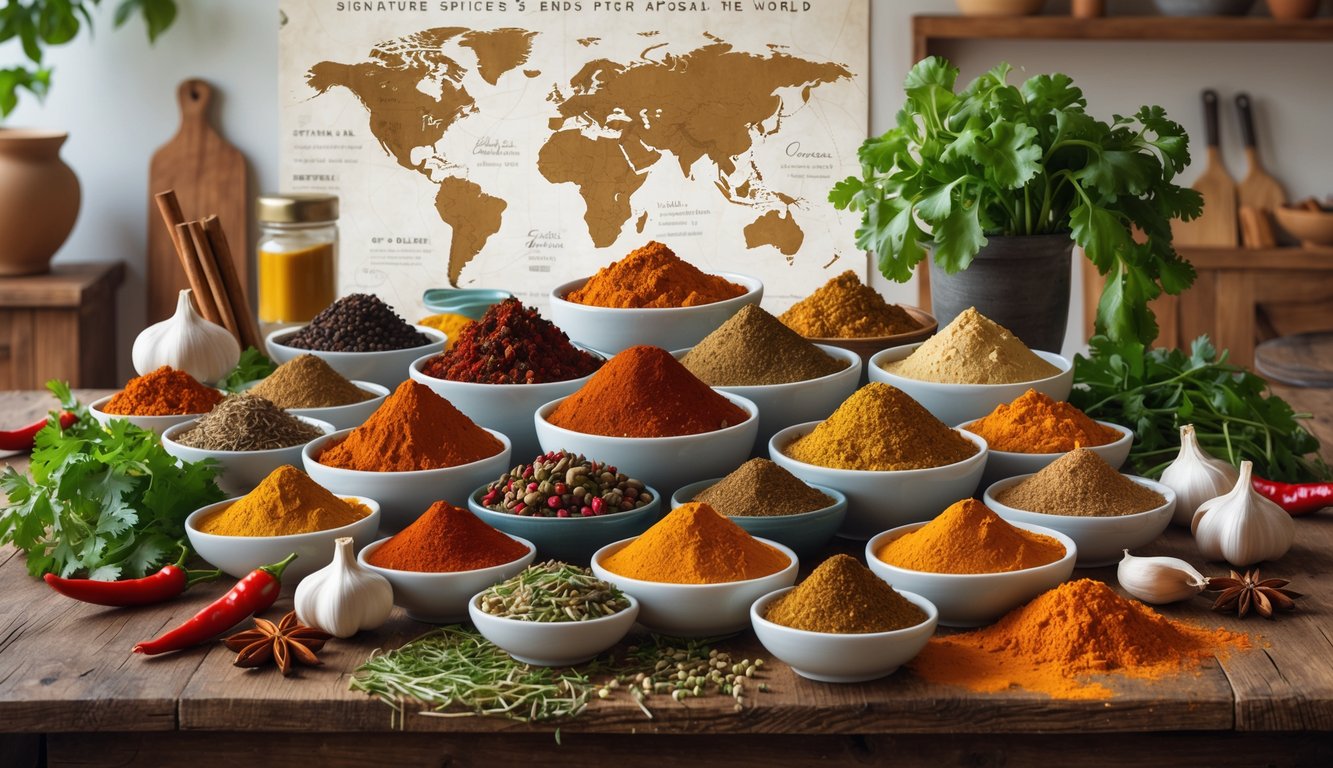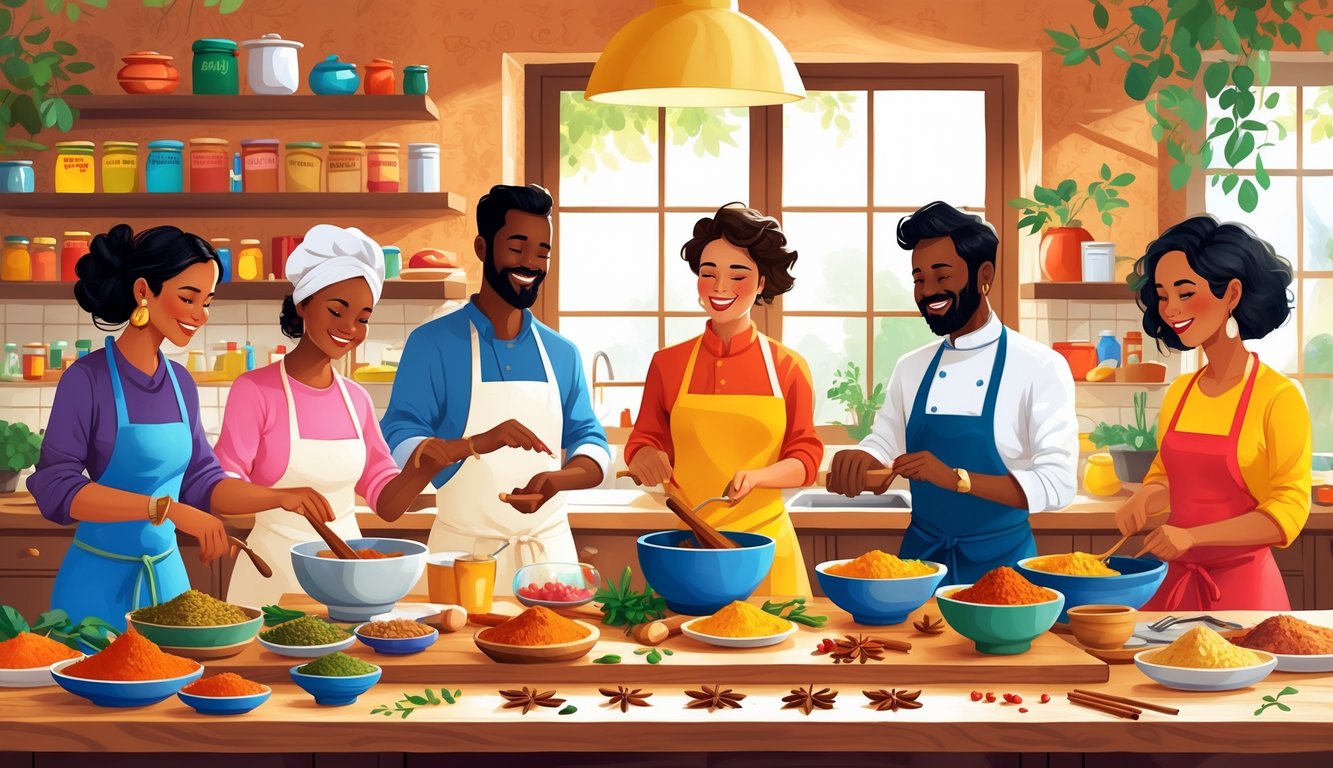
Favorite Ways Home Cooks Use Spices Today
Suddenly everyone’s buying cumin and smoked paprika like salt’s gone out of style. I’ve watched people Google “best spices for chicken thighs” and then panic-buy ground coriander. Allspice and nutmeg are somehow in roasted veggies now. Scandinavian vibes? Maybe. Or just chaos.
Everyday Meals and Comfort Foods
Chopping onions at 7 AM? Not happening. Onion powder exists for a reason. Saw a YouTuber dump it into eggs and now I’m doing it too. Garlic granules, smoked paprika, cayenne—throw them in stews, beans, whatever. Food tastes way better, or at least different.
Cardamom and clove used to be for desserts. Now they’re in lentil soup and mac and cheese (turmeric for color, maybe for health, who knows). Here’s a list if you want to feel behind. Everyone wants a “chef’s pantry” now.
Turmeric in chicken pot pie? That happened in my kitchen. Mashed potatoes, too. My neighbor said it was “elevated.” I just wanted something new. Comfort food is whatever you say it is.
Quick Marinades and Dry Rubs
Who’s marinating anything overnight anymore? Dry rubs are king: cumin, smoked paprika, fennel—mix, slap it on, air fry, done. Yogurt marinades? I’m skeptical, but everyone in the forums swears by them. Coriander, ginger, mustard—some say it “tenderizes,” some just like the color. Fennel and coriander are trending for a reason, not just Persian koobideh.
Veggie dry rubs are a battlefield. Chili powder on potatoes? Sure. Cinnamon? That gets you side-eye. Marinades that need 12 hours? No one’s got time.
Gourmet Baking and Sweet & Savory Dishes
Stare at your spice rack long enough, you’ll end up putting sumac in banana bread. (I did. Results: debatable. Supposedly sumac’s loaded with antioxidants, but whatever.) Some blog claims lavender is “essential” for baking. My lavender scones tasted like a candle.
Brown butter’s the hack everyone uses now. Grate star anise into apple galettes—sometimes with black pepper, because a blogger said it’s “classic French.” Most of the time it’s just cinnamon and cloves from some ancient jar. Food mags call that “elevated.”
Mustard powder in cornbread, za’atar in scones, chili flakes on chocolate bark—tradition’s out the window. I tossed nigella in something once and people acted like I’d invented flavor.
Signature Spice Blends and Their Global Roots

Nobody told me spice blends would cause so many arguments. Paprika vs. berbere, what counts as “real” curry? It’s endless. I see home cooks clutching saffron or cardamom, hoping for a magic blend. You try to organize your spice drawer, next thing you know, you’ve got ras el hanout envy.
Popular Single-Origin Spices vs. Specialty Blends
Buying turmeric just for lattes—regret. Specialty blends show up after every holiday. Suddenly everyone’s grandma “always used za’atar.” Sure. TikTok taught you about dukkah, admit it. “Single-origin” is the new status symbol, but I’m still staring at Aleppo pepper, missing sumac.
Pure cumin, fennel, Sichuan peppercorns? That’s “serious cook” territory. But blends like shichimi togarashi or berbere are everywhere now, promising shortcuts to “authentic” flavor. I read this chart of global spice ratios—nobody uses the same mix twice. Apparently, 57% of people mismeasure garam masala within six months. I write dates on blends and never check them again.
Building Flavor Profiles with Spice Mixes
“Building flavor profiles” sounds important, but honestly, I never remember what’s in five-spice powder. Sometimes I just grab whatever jar looks fun. Experts can’t agree on anything—good luck finding the “right” clove-to-cinnamon ratio for mulled wine. It’s mostly about hype and whoever yells “umami bomb” loudest online.
Sure, it helps to know which North African blends are spicy or which Southeast Asian mixes use coriander. But famous chefs brag about hand-grinding spices—meanwhile, I gave up after cleaning my grinder twice. Real tip: dump old blends into a “mystery jar” every year. Someone once asked for my “signature blend.” Read about blending if you want, but nothing fixes running out of smoked paprika at 6:30 PM.
Culinary Traditions and Modern Adaptations

So, my pantry’s basically a museum of impulse spice buys and half-finished sauces. Cumin sits next to a bottle of tangelo vinaigrette I bought after some food influencer raved about it—never used it, but whatever. Chefs keep saying “traditional foodways” are alive and well, hiding in random weeknight dinners, and sure, I guess that’s true? I mean, why shouldn’t miso get cozy with French mustard? There’s no law.
How Global Cuisines Inspire Home Cooking
Can someone explain why Thai basil’s suddenly in everything? My neighbor dumped a handful in potato salad and called it “elevated.” I still have questions. Same with Mexican adobo and Japanese shichimi togarashi—half these blends, I can’t even pronounce, but somehow they end up in my eggs because I read a trendy home cooking article and got ideas.
Here’s the thing: I’ll layer panch phoron on carrots and then complain about grocery prices, because sumac is apparently only available at the same store that sells patio umbrellas. Food historians keep talking about “cultural mashups” and, yeah, my kitchen is one long experiment—sometimes it works, sometimes it’s just chaos. Trinidadian green seasoning in salad dressing? Sure. Is it a family tradition? Not unless “family” means “me, Googling stuff at 10pm.”
Innovative Condiments and Dressings
Yesterday, my sibling texted me in all caps about someone bringing kombu pesto to the block party. I tried it. Was it good? Not sure. People pretend they know the difference between chermoula and chimichurri, but honestly, even the “chef” at the table is winging it. If you want to act like you’re in the know, just do what the spice nerds do: blend yogurt, tahini, lime, smoked paprika, and make up a name on the spot. “North African fusion,” why not.
I went to a workshop once—this chef swore vinaigrettes get their magic from spices, not the vinegar. I dumped za’atar in lemon dressing and called it a day; my niece actually ate salad, so maybe he’s right. Culinary magazines keep going on about global spice blends turning condiments into the star, not just a cover-up for dry meat. Oh, and if you haven’t tried mango puree, soy sauce, and habanero together: it’s probably a mistake, but you’ll tell people about it anyway.



